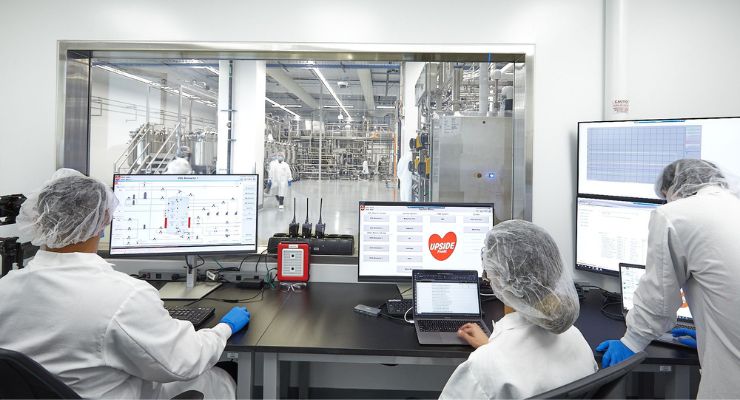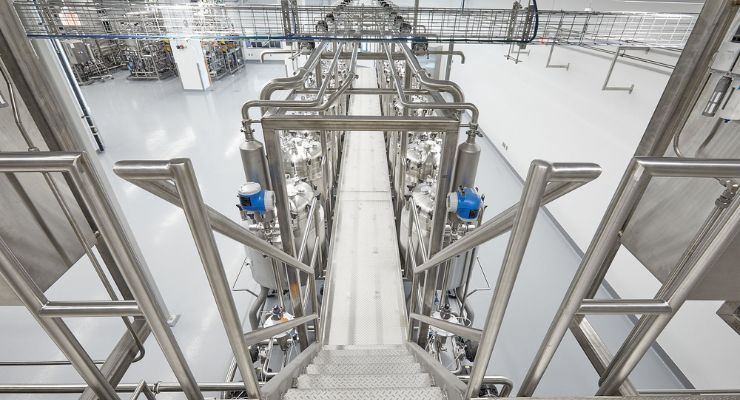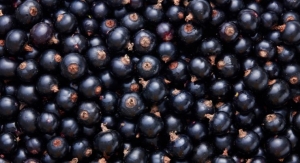By Erik Goldman, Holistic Primary Care04.27.23
For the better part of the last 50 years, medical practitioners and health experts—especially the holistically-minded ones—have been advocating for plant-rich diets and reduction of meat consumption.
While the number of vegetarians and vegans has surely increased over the years, their numbers are far exceeded by the number of carnivores and omnivores. According to Gallup data posted on the Wikipedia entry on “Vegetarianism by Country” there are approximately 7.6 million vegetarians in the U.S., representing just 3% of the total population. Even in India, with its ancient vegetarian cultures, strict plant-eaters make up less than 40% of the total population.
The reality is, despite the best efforts of public health groups, animal rights advocates, and some religious leaders to convince people to go all-in on plants, all available data indicate that humans today are eating more meat, not less. A 2019 report by researchers at the non-profit Our World In Data tells the story in astonishing detail:
Per-capita meat consumption, which averages roughly 43 kg per year globally, tends to rise in close correlation with per-capita income growth. Many once-poor nations show consistent patterns of increased meat consumption as standards of living improve, and middle classes grow larger.
The U.S. leads the world in carnivory. In the year 2020, Americans ate an average of 127 kg of meat per person. Australia comes in second, with a national average of 121 kg per capita. In contrast, in China—where meat consumption has skyrocketed in recent decades—the average is 66 kg per capita.
Roughly 1.3 billion people worldwide are involved in animal agriculture for their livelihoods, and the meat and dairy industries all over the world have been racing to keep up with demand.
The negative environmental impacts of industrial-scale livestock agriculture, as well as its ghastly cruelty, have all been well-documented. All of these factors—coupled with the fact that the world’s population is projected to hit nearly 10 billion by 2050—have raised serious questions about whether meat production as we have always known it is sustainable for the future. A growing number of people are concluding that it is not.
Enter cellular agriculture and tissue-cultured meat.
The relentless global demand for meat has opened doors to radically new ways of producing edible animal tissue, ushering in the first fundamental challenge to animal agriculture in the last 5,000 years.
Across the globe, companies backed by major investors are now applying the tissue culture techniques originally developed for pharmaceutical research to the production of beef, chicken, and even some types of seafood, without raising or killing any animals.
This emerging industry is still in an early stage, and not quite ready for the retail Big Leagues. Companies in the space are not yet ready to scale up production to the levels required to stock grocery store shelves. But they’re getting close.
But cultured meat—sometimes called “cultivated meat,” “slaughter-free meat” and “cell-based meat” or derided by opponents as “Frankenmeat”—took center stage in the U.S. last November, when the Food and Drug Administration (FDA) declared that the tissue-cultured chicken produced by a company called Upside Foods is safe for human consumption.

Several months later, in March 2023, the FDA gave a green light to another producer called GOOD Meat, an offshoot venture of Eat Just (formerly Hampton Creek) funded in part by investments from billionaire Li Ka-shing, Yahoo co-founder Jerry Yang, and several large corporations. GOOD Meat is already commercially available in Singapore, one of several global epicenters for the nascent cultured meat industry. GOOD’s signature “Chicken Bites” were the first cultured meat products to be approved by Singapore’s regulatory agency.
But they are fundamentally different: plant-based meats are produced solely from plant-derived raw materials—usually pea or soy—subjected to an array of heat, pressure, and chemical processes that transform them into chewy, meaty substances. Tissue-cultured meats are 100% derived from animal sources, and the end products are, in fact, animal tissue. Think of it as cellular agriculture.
First developed in 2013 in the Netherlands, the process involves harvesting muscle cells from cows, chickens, sheep, pigs, or other animals, and then growing them in nutrient-packed liquid media contained inside massive bioreactors. There are many variations on this basic process, which typically takes around 14 days from start to finish, but the basic principle is the same.
The end product is raw meat that, at the cellular level, is identical to flesh taken from slaughtered animals. The cultured meat can be cut up and formed into strips, patties, sausages, or any other popular form.
This is not a new idea. Back in 1931, Winston Churchill published an essay called “Fifty Years Hence,” in which he predicted: “With a greater knowledge of what are called hormones, i.e. the chemical messengers in our blood, it will be possible to control growth. We shall escape the absurdity of growing a whole chicken to eat the breast or wing, by growing these parts separately under a suitable medium.”
Churchill’s prediction was off by about 40 years, but he foresaw a possibility that is just now becoming practical and marketable.
Today, there are hundreds of companies now applying variations of cell culture technology to grow chicken, beef, and even some types of seafood, including shrimp, crab, and lobster. This emerging industry has drawn the attention of investors who are fueling a worldwide race to market. In a landmark moment, cultivated chicken was served at last year’s COP27 climate conference, raising worldwide awareness and giving the new industry an invaluable PR opportunity to promote its environmental sustainability claims.

In clearing the Upside Foods (formerly known as Memphis Meats) chicken as safe for human consumption, the FDA has opened a path for the company to bring its product to market as soon as its facilities have been inspected and cleared by the U.S. Department of Agriculture (USDA).
Boasting that it will produce “the fried chicken chickens dream about,” Upside’s website clearly states the have-it-all value proposition behind the entire cultured meat movement: “We love meat. We also love animals. And the blue-green planet we share. So we’re making meat a new way, cultivating it directly from animal cells to satisfy our cravings, our conscience, and our heart.”
Upside has convinced some very high-level investors to jump in. In its early stage, while still Memphis Meats, the company raised $17 million from Bill Gates, Richard Branson, and Jack Welch, among others. A subsequent Series B round raised $161 million from investors that included Big Ag leaders like Cargill and Tyson Foods.
GOOD Meats is also priming its engine. Parent company Eat Just—a leader in the plant-based egg sector—is building what it claims will be the world’s largest tissue culture bioreactor. CEO Josh Tetrick recently told Forbes that within the next few years, GOOD Meat will be able to produce upwards of 40 million pounds of meat, and that its products will reach price parity with conventional meat by 2027.
Singapore is already ahead of the U.S. in the global new-meat marathon. Back in 2020, it became the first country to approve cultured chicken for retail sale. And Singapore-based companies are already working on cultured seafood.
For example, Shiok Meats has created a huge shrimp farm entirely derived from tissue taken from one single shrimp cell. Company founders Ka Yi Ling, PhD, and Sandhya Sriram, PhD, say their “cultivated crustaceans” can revolutionize the seafood industry—which, like livestock agriculture, has had devastating environmental impact.
Shiok—derived from a Malay word that means something akin to “feel-good”—offers cultured shrimp, crab, prawn, and lobster meat that the company claims is healthy, nutritious, free of hormones, antibiotics, and microplastics. They’ve even found a way to turn the nutrient media in which the cell cultures are grown into a marketable seasoning powder, thus minimizing waste. Shiok also owns Gaia Foods, a company specializing in tissue culture production of red meats.

Believer Meats: Israel is another epicenter for cultured meat. Several of the world’s leading companies are based there, fueled by the country’s robust biotech and medical industries. One Israeli brand, Believer Meats (formerly called Future Meat Technologies), plans to open the first commercial-scale cultured meat production facility on U.S. soil by Q1 2024. Construction is already underway. Believer says that once it hits “go,” it will be able to produce 22 million pounds of meat in the U.S. per year. Investors include Tyson Foods and Archer Daniels Midland (ADM). Michael Lenahan, head of Believer’s U.S. division, said they’ll start with chicken, and then tissue-cultured lamb later on.
Mission Barns: There are more than 80 cultured meat startups in the San Francisco Bay area, making it another global hotspot for this surging industry. One of them is Mission Barns, which made global news early in 2023 when it beta-tested its ground pork meatballs and bacon to a select group of foodies. Among them was Oliver Milman, a writer for The Guardian, who also happens to be a long-time vegetarian. Millman’s take? “The meatball was succulent, the bacon was crisp and, even to a vegetarian, both had the undeniable quality of meat.”
Mission’s pork combines cultivated meat with pea-derived plant proteins and a patented substance called “Mission Fat,” also produced by cell culture. The company has partnered with a well-established sausage maker called Silva, to launch a new line of tissue cultured sausage products.
Meatable: Most cultured meat producers use differentiated muscle tissue as starter material. Meatable, a Dutch company, has taken a different approach: it uses pluripotent stem cells, rather than differentiated muscle, to grow its meats. The company says this gives greater control over the development of muscle, fat, and connective tissue, which could help to solve some of the textural issues that have plagued cultured meat so far. Cultured meats grown from differentiated muscle cells often lack the connective tissue and fat that gives meat its complex texture. Meatable wants to change that.
Aleph Farms: Aleph Farms is on track to become the first company in the world to produce a completely tissue-cultured steak that includes the marbling and juice that carnivores love. Aleph accomplishes this via a process akin to 3D printing. Aryn Baker, who recently taste-tested one of Aleph’s steaks for TIME magazine, said she liked the flavor, though she noted that, “The square shape and thin cut betray my steak’s bioreactor origins.”
Like most cultured meat makers, Aleph touts the Earth-friendliness of its offerings. But the company is already looking beyond the bounds of terrestrial life. The company has partnered with 3D Bioprinting Solutions on a “Meat for Space” program to produce meat in zero-gravity conditions on the International Space Station.
Steakholder Foods: Formerly known as MeaTech 3D, Steakholder Foods is one of the few publicly traded cultured meat companies. Last fall, the company began production of its “Omakase Beef Morsels”—little meat blocks made from alternating layers of bio-printed Wagyu beef muscle and fat. Steakholder has also partnered with Umami Meats—a producer of cultured “no catch” seafood—to build machines that can print grouper, eel, and in the future, other types of fish.
Clear Meat: Based in Delhi, Clear Meat is India’s first cultured meat maker. Its cultured “EcoMeat” chicken and beef keema replicates the finely minced meat used widely in South Asian and Near Eastern cooking. Clear Meat says its chicken keema will cost Indian consumers less than conventional keema from slaughtered chickens—800-850 rupees (U.S.$10.77-11.44) versus roughly 1,000 INR ($12.10) for equivalent weights.

Less Cruelty: Let’s face it, raising animals for slaughter—especially at mass market scale—is extremely cruel from start to finish. Though cultured meat production is not entirely animal-free (current techniques depend on the use of fetal bovine growth serum), it more or less eliminates the need to breed and then kill billions of animals.
Better Environmental Profile: Industrial-scale tissue culture does require significant energy and material resources, but it is nowhere near as resource-intensive as conventional livestock agriculture. Advocates say that if widely embraced, cultured meat would obviate the need to clear-cut rainforests for ranches and feedlots. Cultured seafood would reduce our continued ravaging of the already overfished seas.
It would also cut greenhouse gas emissions. The United Nations Food and Agriculture Organization estimated that livestock currently generate 7.1 gigatons of CO2 equivalents per year, roughly 14.5% of all greenhouse gas emissions.
Antibiotic-Free: Livestock raised in confinement are susceptible to disease. Likewise, the slaughter and butchering of animals is a dirty, disease-prone process. According to the FDA, roughly 70% of all medically-useful antibiotics are used not by doctors to treat human disease, but by farmers to treat livestock. This is a major driver of antibiotic resistance. Since cultured meat is grown in highly controlled bioreactors, it does not require use of antibiotics—at least that’s what many companies claim.
Wider Access to Nutritious Protein: If—and it’s a big “if”—cultured meat producers can find ways to lower production costs to equivalence with conventional meat, they could potentially make nutritious animal protein more widely available to a larger proportion of the world’s population.
Last winter, Italy’s Minister of Agriculture and Food Sovereignty, Francesco Lollobrigida, introduced a bill that would ban cultured meat, cultured milk, and other “synthetic” foods from entering Italy’s market sphere.
Lollobrigida and his sister-in-law, Prime Minister Giorgia Meloni, who represent the conservative Fratelli d’Italia (Brothers of Italy) party, view lab-cultured meat and dairy products as a threat to Italy’s venerable culinary and agricultural traditions, and even to the Mediterranean diet itself. Culinary protectionism has become something of a political battle cry for some of Italy’s far-right politicians, who—along with Coldiretti, Italy’s largest association of farmers—are even seeking to ban other non-traditional but naturally-occurring ingredients like cricket or locust flour.
The proposed ban, if enacted, might be more political theater than impactful policy, because European Union (EU) rules could override it. So far, however, the EU as a governing body has yet to issue formal rules or guidelines for cultured meats.

Dependence on Fetal Bovine Serum: Most current production systems depend on growth factors derived from fetal bovine serum (FBS). This is widely used in all forms of tissue culture. It is considered a “byproduct” of meat production, collected in commercial slaughterhouses from fetal cows. Given the essential role of FBS in the production process, many of the soon-to-market cultured meats will not truly be completely animal-free or cruelty-free. Rapid growth of cultured meat would drive greater demand for FBS.
Several companies, notably Meatable and Future Meat, have introduced alternative growth techniques that do not require FBS. For now, however, FBS-based growth stimulation is still the norm, and it somewhat taints the claim that cultured meat is totally humane.
Cost: In 2013, the first cultured burger cost roughly $330,000 to make. Costs have dropped markedly since then, but in general, the total cost for cultured meats is still much higher than for traditional slaughtered meat.
The culturing techniques now used in the food industry were first developed by pharma companies to make drugs and vaccines. Generally, this is a low-yield, high-cost process; it was never intended as a means of churning out billions of hot dogs. The challenge for cultured meat brands is to find ways to increase output at lower costs.
Growth serum is the most expensive component in the process, costing roughly $1,000 per liter, and representing approximately 80% of total production cost. If manufacturers develop cheaper alternatives, they’ll be able to bring prices closer to parity with traditional meat, but they’re not there yet.
Highly Processed: Cultured meat companies are already singing the natural products industry’s greatest hits: Sustainable and Earth-Friendly, Kinder and Cleaner, Better For You, Better for the Planet, and so forth. But it’s hard to ignore the fact that these are highly processed, engineered products. There’s nothing “natural” about 3D printing a ribeye. This will likely bother many “healthy and natural” consumers.
Though there are no reasons—so far—to think that cultured meat will be any more or less healthy for humans than conventionally raised meat, many people are wary.
Corporate Control of Food: Some observers view the cultured meat movement as yet another step toward total corporate dominance of all human food sources. Critics contend that wide adoption of cultured meat would drive small farmers and ranchers out of business, while concentrating ever-greater control in the hands of giant agribusinesses.
Given the level of investment from major corporate players, there’s some validity to this concern. It is also very likely that once the start-ups bring their cultured cutlets to market, the CPG firms will swoop in to acquire them. But the truth is, big corporations already control—directly or indirectly—the majority of farms and ranches worldwide. There will always be consumers who want traditional meat from animals; traditional agriculture could very well become a boutique industry.
And Big Ag would not be entirely immune to disruption, if cultured meat does catch on. A reduced demand for livestock-derived meat would, in turn, reduce the global demand for corn and soy—primary components of animal feed. That would, indeed, have economic ripple effects.
Public Acceptance: In concept, there’s a lot to like about cultured meat. But broad acceptance will come down to cost, flavor, and texture. By all accounts, existing cultured meats still lack the true texture of meat. There’s also the matter of standardized sizes and forms. Are we ready to accept uniform 3D-printed lamb chops?
Religious and Ethical Concerns: Cultured meats raise interesting questions for vegetarians, especially those who became vegetarians for ethical reasons. Since it is not directly obtained from slaughtered animals, some vegetarians might find it acceptable.
The Hindu religion’s embrace of vegetarianism is based on the core value of Ahimsa, the striving to reduce harm. Many Buddhists share this value. Cultivated meats would certainly minimize animal suffering. Would this make these products acceptable?
According to the Hindu American Foundation website, practicing Hindus have diverse opinions about cultured meats. Though these new forms of meat involve less cruelty, they still retain the properties of meat which, in Ayurvedic terms, is considered tamasic (leading to dullness, apathy, and negative emotions).
Jewish rabbinical authorities are divided on the subject of cultured meats. Some hold that if the original cell lines and growth factors were harvested from Kosher animals, then the resulting products are Kosher. Others say meat can only be Kosher if it is taken from an animal slaughtered in the proper ritual way. This means cultured meat products would not qualify, since the tissue is grown from samples taken from a living animal.
Similarly, some Islamic authorities have ruled that these products can only be deemed Halal if all components of its production were obtained from Halal animals, treated and slaughtered in the ritually proper ways.
A review article in the journal Frontiers in Nutrition noted that “because of its nebulous status, religious authorities are still debating” whether or not lab-grown meat can fit with long-established religious dietary doctrines.
“In the meat industry, in the alternative protein industry, and in this emerging cultivated meat, lab-grown meat industry, there’s a lot of manufactured demand and manipulation of demand."
Chloé Sorvino, author of the book Raw Deal, is dubious. She suggested that the superstar brands in the alterna-meat sector are trying to manufacture demand in the absence of actual consumer interest. In a recent interview with Slate, Sorvino voiced concerns that Silicon Valley entrepreneurs are driving cultured meat with the same sort of financial hype that they use to promote other technologies.
“In the meat industry, in the alternative protein industry, and in this emerging cultivated meat, lab-grown meat industry, there’s a lot of manufactured demand and manipulation of demand,” she told Slate editor Lizzie O’Leary.
But industry advocates, like the Good Food Institute, contend that cultured meats are addressing a host of actual consumer values, and that by 2035, cultured meat will make up almost a quarter of global meat consumption.
The more immediate question is whether producers can reduce costs and bring commercially viable products to market, and whether meat-eaters will embrace these new alternatives. Investors and tech innovators are certainly betting that they will. Time will tell if the public agrees.
About the Author: Erik Goldman is co-founder and editor of Holistic Primary Care: News for Health & Healing, a quarterly medical publication reaching about 60,000 physicians and other healthcare professionals nationwide.
While the number of vegetarians and vegans has surely increased over the years, their numbers are far exceeded by the number of carnivores and omnivores. According to Gallup data posted on the Wikipedia entry on “Vegetarianism by Country” there are approximately 7.6 million vegetarians in the U.S., representing just 3% of the total population. Even in India, with its ancient vegetarian cultures, strict plant-eaters make up less than 40% of the total population.
The reality is, despite the best efforts of public health groups, animal rights advocates, and some religious leaders to convince people to go all-in on plants, all available data indicate that humans today are eating more meat, not less. A 2019 report by researchers at the non-profit Our World In Data tells the story in astonishing detail:
- Globally, meat production is more than three times higher than it was in the 1970s;
- Each year more than 80 billion animals are slaughtered for meat;
- Worldwide, humans are producing and consuming more than 340 million tons of meat annually.
Per-capita meat consumption, which averages roughly 43 kg per year globally, tends to rise in close correlation with per-capita income growth. Many once-poor nations show consistent patterns of increased meat consumption as standards of living improve, and middle classes grow larger.
The U.S. leads the world in carnivory. In the year 2020, Americans ate an average of 127 kg of meat per person. Australia comes in second, with a national average of 121 kg per capita. In contrast, in China—where meat consumption has skyrocketed in recent decades—the average is 66 kg per capita.
Roughly 1.3 billion people worldwide are involved in animal agriculture for their livelihoods, and the meat and dairy industries all over the world have been racing to keep up with demand.
The negative environmental impacts of industrial-scale livestock agriculture, as well as its ghastly cruelty, have all been well-documented. All of these factors—coupled with the fact that the world’s population is projected to hit nearly 10 billion by 2050—have raised serious questions about whether meat production as we have always known it is sustainable for the future. A growing number of people are concluding that it is not.
Enter cellular agriculture and tissue-cultured meat.
The relentless global demand for meat has opened doors to radically new ways of producing edible animal tissue, ushering in the first fundamental challenge to animal agriculture in the last 5,000 years.
Across the globe, companies backed by major investors are now applying the tissue culture techniques originally developed for pharmaceutical research to the production of beef, chicken, and even some types of seafood, without raising or killing any animals.
This emerging industry is still in an early stage, and not quite ready for the retail Big Leagues. Companies in the space are not yet ready to scale up production to the levels required to stock grocery store shelves. But they’re getting close.
But cultured meat—sometimes called “cultivated meat,” “slaughter-free meat” and “cell-based meat” or derided by opponents as “Frankenmeat”—took center stage in the U.S. last November, when the Food and Drug Administration (FDA) declared that the tissue-cultured chicken produced by a company called Upside Foods is safe for human consumption.

Upside Foods control room. Photo courtesty of Upside Foods
Several months later, in March 2023, the FDA gave a green light to another producer called GOOD Meat, an offshoot venture of Eat Just (formerly Hampton Creek) funded in part by investments from billionaire Li Ka-shing, Yahoo co-founder Jerry Yang, and several large corporations. GOOD Meat is already commercially available in Singapore, one of several global epicenters for the nascent cultured meat industry. GOOD’s signature “Chicken Bites” were the first cultured meat products to be approved by Singapore’s regulatory agency.
Cellular Agriculture
Many people assume the new cultured meats are yet another variant of the “plant-based meat” craze that swept the natural products and healthy living sectors several years ago. Both movements boast similar environmental and cruelty-free virtues, and both appeal to affluent, values-driven food lovers.But they are fundamentally different: plant-based meats are produced solely from plant-derived raw materials—usually pea or soy—subjected to an array of heat, pressure, and chemical processes that transform them into chewy, meaty substances. Tissue-cultured meats are 100% derived from animal sources, and the end products are, in fact, animal tissue. Think of it as cellular agriculture.
First developed in 2013 in the Netherlands, the process involves harvesting muscle cells from cows, chickens, sheep, pigs, or other animals, and then growing them in nutrient-packed liquid media contained inside massive bioreactors. There are many variations on this basic process, which typically takes around 14 days from start to finish, but the basic principle is the same.
The end product is raw meat that, at the cellular level, is identical to flesh taken from slaughtered animals. The cultured meat can be cut up and formed into strips, patties, sausages, or any other popular form.
This is not a new idea. Back in 1931, Winston Churchill published an essay called “Fifty Years Hence,” in which he predicted: “With a greater knowledge of what are called hormones, i.e. the chemical messengers in our blood, it will be possible to control growth. We shall escape the absurdity of growing a whole chicken to eat the breast or wing, by growing these parts separately under a suitable medium.”
Churchill’s prediction was off by about 40 years, but he foresaw a possibility that is just now becoming practical and marketable.
Today, there are hundreds of companies now applying variations of cell culture technology to grow chicken, beef, and even some types of seafood, including shrimp, crab, and lobster. This emerging industry has drawn the attention of investors who are fueling a worldwide race to market. In a landmark moment, cultivated chicken was served at last year’s COP27 climate conference, raising worldwide awareness and giving the new industry an invaluable PR opportunity to promote its environmental sustainability claims.

Photo courtesy of GOOD Meat
A Race to Market
Cultivated meat products are very likely to hit U.S. retail shelves within the next two to three years.In clearing the Upside Foods (formerly known as Memphis Meats) chicken as safe for human consumption, the FDA has opened a path for the company to bring its product to market as soon as its facilities have been inspected and cleared by the U.S. Department of Agriculture (USDA).
Boasting that it will produce “the fried chicken chickens dream about,” Upside’s website clearly states the have-it-all value proposition behind the entire cultured meat movement: “We love meat. We also love animals. And the blue-green planet we share. So we’re making meat a new way, cultivating it directly from animal cells to satisfy our cravings, our conscience, and our heart.”
Upside has convinced some very high-level investors to jump in. In its early stage, while still Memphis Meats, the company raised $17 million from Bill Gates, Richard Branson, and Jack Welch, among others. A subsequent Series B round raised $161 million from investors that included Big Ag leaders like Cargill and Tyson Foods.
GOOD Meats is also priming its engine. Parent company Eat Just—a leader in the plant-based egg sector—is building what it claims will be the world’s largest tissue culture bioreactor. CEO Josh Tetrick recently told Forbes that within the next few years, GOOD Meat will be able to produce upwards of 40 million pounds of meat, and that its products will reach price parity with conventional meat by 2027.
Singapore is already ahead of the U.S. in the global new-meat marathon. Back in 2020, it became the first country to approve cultured chicken for retail sale. And Singapore-based companies are already working on cultured seafood.
For example, Shiok Meats has created a huge shrimp farm entirely derived from tissue taken from one single shrimp cell. Company founders Ka Yi Ling, PhD, and Sandhya Sriram, PhD, say their “cultivated crustaceans” can revolutionize the seafood industry—which, like livestock agriculture, has had devastating environmental impact.
Shiok—derived from a Malay word that means something akin to “feel-good”—offers cultured shrimp, crab, prawn, and lobster meat that the company claims is healthy, nutritious, free of hormones, antibiotics, and microplastics. They’ve even found a way to turn the nutrient media in which the cell cultures are grown into a marketable seasoning powder, thus minimizing waste. Shiok also owns Gaia Foods, a company specializing in tissue culture production of red meats.

Photo courtesty of Upside Foods
Global Trend
Cultured-meat start-ups have emerged all over the world. Here are a few notable companies, though there are many others, and still more are likely to emerge:Believer Meats: Israel is another epicenter for cultured meat. Several of the world’s leading companies are based there, fueled by the country’s robust biotech and medical industries. One Israeli brand, Believer Meats (formerly called Future Meat Technologies), plans to open the first commercial-scale cultured meat production facility on U.S. soil by Q1 2024. Construction is already underway. Believer says that once it hits “go,” it will be able to produce 22 million pounds of meat in the U.S. per year. Investors include Tyson Foods and Archer Daniels Midland (ADM). Michael Lenahan, head of Believer’s U.S. division, said they’ll start with chicken, and then tissue-cultured lamb later on.
Mission Barns: There are more than 80 cultured meat startups in the San Francisco Bay area, making it another global hotspot for this surging industry. One of them is Mission Barns, which made global news early in 2023 when it beta-tested its ground pork meatballs and bacon to a select group of foodies. Among them was Oliver Milman, a writer for The Guardian, who also happens to be a long-time vegetarian. Millman’s take? “The meatball was succulent, the bacon was crisp and, even to a vegetarian, both had the undeniable quality of meat.”
Mission’s pork combines cultivated meat with pea-derived plant proteins and a patented substance called “Mission Fat,” also produced by cell culture. The company has partnered with a well-established sausage maker called Silva, to launch a new line of tissue cultured sausage products.
Meatable: Most cultured meat producers use differentiated muscle tissue as starter material. Meatable, a Dutch company, has taken a different approach: it uses pluripotent stem cells, rather than differentiated muscle, to grow its meats. The company says this gives greater control over the development of muscle, fat, and connective tissue, which could help to solve some of the textural issues that have plagued cultured meat so far. Cultured meats grown from differentiated muscle cells often lack the connective tissue and fat that gives meat its complex texture. Meatable wants to change that.
Aleph Farms: Aleph Farms is on track to become the first company in the world to produce a completely tissue-cultured steak that includes the marbling and juice that carnivores love. Aleph accomplishes this via a process akin to 3D printing. Aryn Baker, who recently taste-tested one of Aleph’s steaks for TIME magazine, said she liked the flavor, though she noted that, “The square shape and thin cut betray my steak’s bioreactor origins.”
Like most cultured meat makers, Aleph touts the Earth-friendliness of its offerings. But the company is already looking beyond the bounds of terrestrial life. The company has partnered with 3D Bioprinting Solutions on a “Meat for Space” program to produce meat in zero-gravity conditions on the International Space Station.
Steakholder Foods: Formerly known as MeaTech 3D, Steakholder Foods is one of the few publicly traded cultured meat companies. Last fall, the company began production of its “Omakase Beef Morsels”—little meat blocks made from alternating layers of bio-printed Wagyu beef muscle and fat. Steakholder has also partnered with Umami Meats—a producer of cultured “no catch” seafood—to build machines that can print grouper, eel, and in the future, other types of fish.
Clear Meat: Based in Delhi, Clear Meat is India’s first cultured meat maker. Its cultured “EcoMeat” chicken and beef keema replicates the finely minced meat used widely in South Asian and Near Eastern cooking. Clear Meat says its chicken keema will cost Indian consumers less than conventional keema from slaughtered chickens—800-850 rupees (U.S.$10.77-11.44) versus roughly 1,000 INR ($12.10) for equivalent weights.

Photo courtesy of GOOD Meat
Benefits of Cultured Meat
All of the emerging cultured meat companies promote a set of core values and advantages over traditional meat production that, at least in principle, are quite appealing:Less Cruelty: Let’s face it, raising animals for slaughter—especially at mass market scale—is extremely cruel from start to finish. Though cultured meat production is not entirely animal-free (current techniques depend on the use of fetal bovine growth serum), it more or less eliminates the need to breed and then kill billions of animals.
Better Environmental Profile: Industrial-scale tissue culture does require significant energy and material resources, but it is nowhere near as resource-intensive as conventional livestock agriculture. Advocates say that if widely embraced, cultured meat would obviate the need to clear-cut rainforests for ranches and feedlots. Cultured seafood would reduce our continued ravaging of the already overfished seas.
It would also cut greenhouse gas emissions. The United Nations Food and Agriculture Organization estimated that livestock currently generate 7.1 gigatons of CO2 equivalents per year, roughly 14.5% of all greenhouse gas emissions.
Antibiotic-Free: Livestock raised in confinement are susceptible to disease. Likewise, the slaughter and butchering of animals is a dirty, disease-prone process. According to the FDA, roughly 70% of all medically-useful antibiotics are used not by doctors to treat human disease, but by farmers to treat livestock. This is a major driver of antibiotic resistance. Since cultured meat is grown in highly controlled bioreactors, it does not require use of antibiotics—at least that’s what many companies claim.
Wider Access to Nutritious Protein: If—and it’s a big “if”—cultured meat producers can find ways to lower production costs to equivalence with conventional meat, they could potentially make nutritious animal protein more widely available to a larger proportion of the world’s population.
Italy’s Proposed Ban
Like all major technological revolutions, cultured meat is not without potential downsides. And while countries like Singapore, Israel, India, and the U.S. charge ahead, others such as Italy are far more hesitant to accept the New Meat.Last winter, Italy’s Minister of Agriculture and Food Sovereignty, Francesco Lollobrigida, introduced a bill that would ban cultured meat, cultured milk, and other “synthetic” foods from entering Italy’s market sphere.
Lollobrigida and his sister-in-law, Prime Minister Giorgia Meloni, who represent the conservative Fratelli d’Italia (Brothers of Italy) party, view lab-cultured meat and dairy products as a threat to Italy’s venerable culinary and agricultural traditions, and even to the Mediterranean diet itself. Culinary protectionism has become something of a political battle cry for some of Italy’s far-right politicians, who—along with Coldiretti, Italy’s largest association of farmers—are even seeking to ban other non-traditional but naturally-occurring ingredients like cricket or locust flour.
The proposed ban, if enacted, might be more political theater than impactful policy, because European Union (EU) rules could override it. So far, however, the EU as a governing body has yet to issue formal rules or guidelines for cultured meats.

Photo courtesy of Upside Foods
Unanswered Questions
However it turns out, Italy’s proposed ban reflects the understandable reluctance that many people feel about cultivated meats, and the technology behind them. Indeed, there are many unanswered questions. Among them:Dependence on Fetal Bovine Serum: Most current production systems depend on growth factors derived from fetal bovine serum (FBS). This is widely used in all forms of tissue culture. It is considered a “byproduct” of meat production, collected in commercial slaughterhouses from fetal cows. Given the essential role of FBS in the production process, many of the soon-to-market cultured meats will not truly be completely animal-free or cruelty-free. Rapid growth of cultured meat would drive greater demand for FBS.
Several companies, notably Meatable and Future Meat, have introduced alternative growth techniques that do not require FBS. For now, however, FBS-based growth stimulation is still the norm, and it somewhat taints the claim that cultured meat is totally humane.
Cost: In 2013, the first cultured burger cost roughly $330,000 to make. Costs have dropped markedly since then, but in general, the total cost for cultured meats is still much higher than for traditional slaughtered meat.
The culturing techniques now used in the food industry were first developed by pharma companies to make drugs and vaccines. Generally, this is a low-yield, high-cost process; it was never intended as a means of churning out billions of hot dogs. The challenge for cultured meat brands is to find ways to increase output at lower costs.
Growth serum is the most expensive component in the process, costing roughly $1,000 per liter, and representing approximately 80% of total production cost. If manufacturers develop cheaper alternatives, they’ll be able to bring prices closer to parity with traditional meat, but they’re not there yet.
Highly Processed: Cultured meat companies are already singing the natural products industry’s greatest hits: Sustainable and Earth-Friendly, Kinder and Cleaner, Better For You, Better for the Planet, and so forth. But it’s hard to ignore the fact that these are highly processed, engineered products. There’s nothing “natural” about 3D printing a ribeye. This will likely bother many “healthy and natural” consumers.
Though there are no reasons—so far—to think that cultured meat will be any more or less healthy for humans than conventionally raised meat, many people are wary.
Corporate Control of Food: Some observers view the cultured meat movement as yet another step toward total corporate dominance of all human food sources. Critics contend that wide adoption of cultured meat would drive small farmers and ranchers out of business, while concentrating ever-greater control in the hands of giant agribusinesses.
Given the level of investment from major corporate players, there’s some validity to this concern. It is also very likely that once the start-ups bring their cultured cutlets to market, the CPG firms will swoop in to acquire them. But the truth is, big corporations already control—directly or indirectly—the majority of farms and ranches worldwide. There will always be consumers who want traditional meat from animals; traditional agriculture could very well become a boutique industry.
And Big Ag would not be entirely immune to disruption, if cultured meat does catch on. A reduced demand for livestock-derived meat would, in turn, reduce the global demand for corn and soy—primary components of animal feed. That would, indeed, have economic ripple effects.
Public Acceptance: In concept, there’s a lot to like about cultured meat. But broad acceptance will come down to cost, flavor, and texture. By all accounts, existing cultured meats still lack the true texture of meat. There’s also the matter of standardized sizes and forms. Are we ready to accept uniform 3D-printed lamb chops?
Religious and Ethical Concerns: Cultured meats raise interesting questions for vegetarians, especially those who became vegetarians for ethical reasons. Since it is not directly obtained from slaughtered animals, some vegetarians might find it acceptable.
The Hindu religion’s embrace of vegetarianism is based on the core value of Ahimsa, the striving to reduce harm. Many Buddhists share this value. Cultivated meats would certainly minimize animal suffering. Would this make these products acceptable?
According to the Hindu American Foundation website, practicing Hindus have diverse opinions about cultured meats. Though these new forms of meat involve less cruelty, they still retain the properties of meat which, in Ayurvedic terms, is considered tamasic (leading to dullness, apathy, and negative emotions).
Jewish rabbinical authorities are divided on the subject of cultured meats. Some hold that if the original cell lines and growth factors were harvested from Kosher animals, then the resulting products are Kosher. Others say meat can only be Kosher if it is taken from an animal slaughtered in the proper ritual way. This means cultured meat products would not qualify, since the tissue is grown from samples taken from a living animal.
Similarly, some Islamic authorities have ruled that these products can only be deemed Halal if all components of its production were obtained from Halal animals, treated and slaughtered in the ritually proper ways.
A review article in the journal Frontiers in Nutrition noted that “because of its nebulous status, religious authorities are still debating” whether or not lab-grown meat can fit with long-established religious dietary doctrines.
“In the meat industry, in the alternative protein industry, and in this emerging cultivated meat, lab-grown meat industry, there’s a lot of manufactured demand and manipulation of demand."
—Chloé Sorvino, in an interview with Slate
Manufactured Demand?
The ascendant cultured meat revolution follows in the wake of the premium plant-based “meat” trend, led by brands such as Beyond, Impossible, Good Catch, and Lightlife. After a few years of vertiginous growth, the plant-meat sector has come back down to earth, but still represents roughly $140 billion in global sales. The question is whether plant-based meats have already reached their maximum growth potential, and whether cultured meats—since they are intrinsically meatier—would appeal to a broader swath of consumers.Chloé Sorvino, author of the book Raw Deal, is dubious. She suggested that the superstar brands in the alterna-meat sector are trying to manufacture demand in the absence of actual consumer interest. In a recent interview with Slate, Sorvino voiced concerns that Silicon Valley entrepreneurs are driving cultured meat with the same sort of financial hype that they use to promote other technologies.
“In the meat industry, in the alternative protein industry, and in this emerging cultivated meat, lab-grown meat industry, there’s a lot of manufactured demand and manipulation of demand,” she told Slate editor Lizzie O’Leary.
But industry advocates, like the Good Food Institute, contend that cultured meats are addressing a host of actual consumer values, and that by 2035, cultured meat will make up almost a quarter of global meat consumption.
The more immediate question is whether producers can reduce costs and bring commercially viable products to market, and whether meat-eaters will embrace these new alternatives. Investors and tech innovators are certainly betting that they will. Time will tell if the public agrees.
About the Author: Erik Goldman is co-founder and editor of Holistic Primary Care: News for Health & Healing, a quarterly medical publication reaching about 60,000 physicians and other healthcare professionals nationwide.
Madiha Saeed, MD, (aka HolisticMomMD) contributed to the reporting in this article).




























